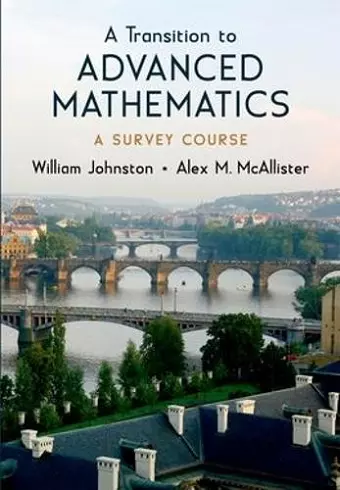A Transition to Advanced Mathematics
A Survey Course
William Johnston author Alex McAllister author
Format:Hardback
Publisher:Oxford University Press Inc
Published:13th Aug '09
Currently unavailable, and unfortunately no date known when it will be back

A Transition to Advanced Mathematics: A Survey Course promotes the goals of a ``bridge'' course in mathematics, helping to lead students from courses in the calculus sequence (and other courses where they solve problems that involve mathematical calculations) to theoretical upper-level mathematics courses (where they will have to prove theorems and grapple with mathematical abstractions). The text simultaneously promotes the goals of a ``survey'' course, describing the intriguing questions and insights fundamental to many diverse areas of mathematics, including Logic, Abstract Algebra, Number Theory, Real Analysis, Statistics, Graph Theory, and Complex Analysis. The main objective of A Transition to Advanced Mathematics is "to bring about a deep change in the mathematical character of students -- how they think and their fundamental perspectives on the world of mathematics." This text promotes three major mathematical traits in a meaningful, transformative way: to develop an ability to communicate with precise language, to use mathematically sound reasoning, and to ask probing questions about mathematics. In short, we hope that working through A Transition to Advanced Mathematics encourages students to become mathematicians in the fullest sense of the word. A Transition to Advanced Mathematics has a number of distinctive features that enable this transformational experience. Embedded Questions and Reading Questions illustrate and explain fundamental concepts, allowing students to test their understanding of ideas independent of the exercise sets. The text has extensive, diverse Exercises Sets; with an average of 70 exercises at the end of section, A Transition to Advanced Mathematics has almost 3000 distinct exercises. In addition, every chapter includes a section that explores an application of the theoretical ideas being studied. We have also interwoven embedded reflections on the history, culture, and philosophy of mathematics throughout the text.
I found the selection of material interesting and stimulating, in both the selection of general topics and the particular items chosen within each topic. It would provide useful background or supplementary reading for a student progressing from A-level to undergraduate study, where the new emphasis on proof and understanding as oppposed to computation can prove something of an obstacle to many. * Robert Low, Mathematics Today *
ISBN: 9780195310764
Dimensions: 254mm x 185mm x 41mm
Weight: 1451g
768 pages